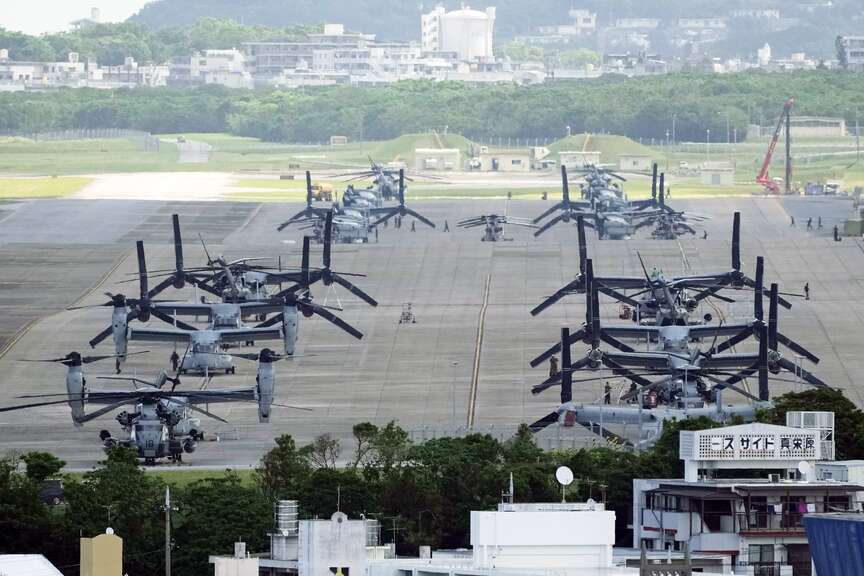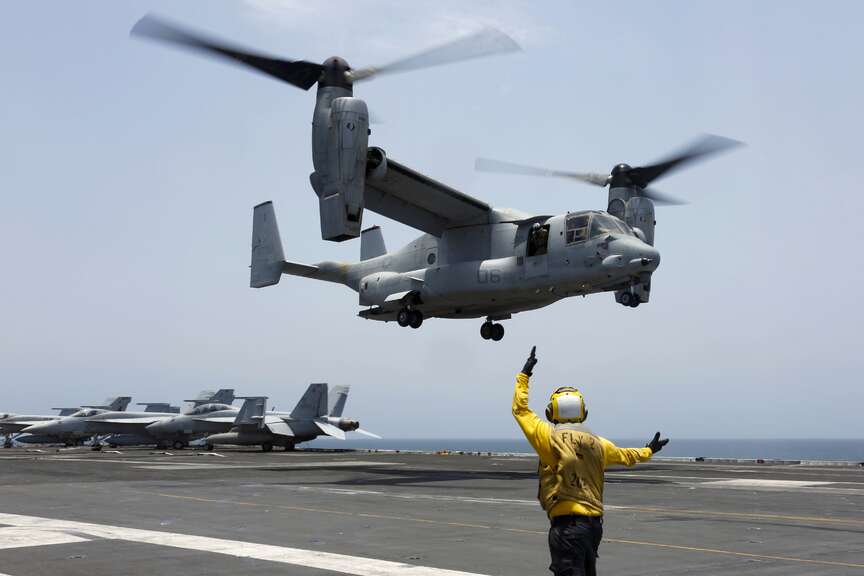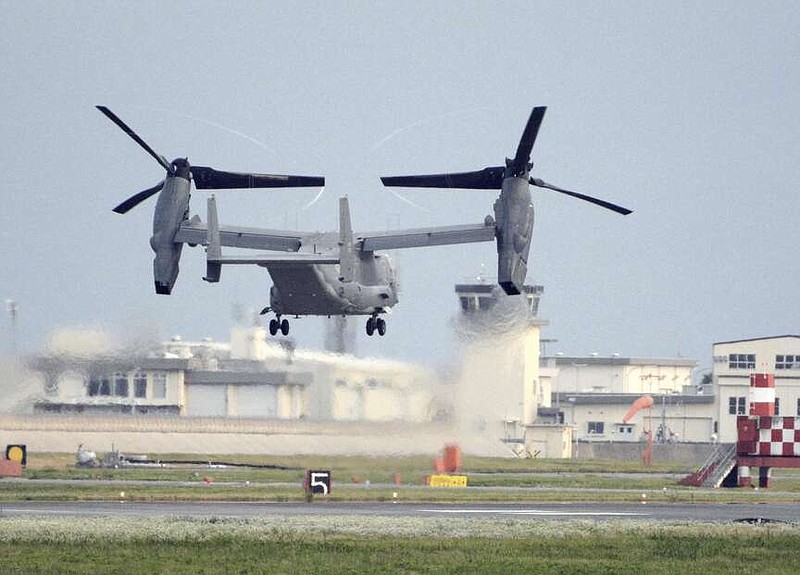WASHINGTON -- The Air Force Special Operations Command said Tuesday that it knows what failed on its CV-22B Osprey leading to a November crash in Japan that killed eight service members. But it still does not know why the failure happened.
Because of the crash, hundreds of Osprey aircraft across the Air Force, Marine Corps and Navy have been grounded since Dec. 6. There are two investigations that are looking into the Japan crash -- a safety investigation board, which is a privileged internal review conducted in private to help inform pilots and crews, as well as an accident investigation board, which is the official administrative review. Both are ongoing.
On Tuesday, Pentagon spokeswoman Sabrina Singh said her understanding is that "the Ospreys are not going back in the air at this time." She said it will be up to the military services to determine when they will be safe to fly again, and she said she can't say if that will be while the investigations continue or must wait until they are completed.
Separately, the Air Force Special Operations Command is doing its own comprehensive review of its CV-22 Osprey program, and while the command has said it knows what failed, it has not made those details public.
"At this time, the material failure that occurred is known but the cause of the failure has not been determined. Engineering testing and analysis is ongoing to understand the cause of the material failure, a critical part of the investigation. Any disclosure of findings prior to investigations being finalized is premature and presumptive," the command said in a statement released Tuesday.
The Air Force, Navy and Marine Corps have been coordinating their efforts on when Osprey crews will be able to safely return to the skies. Each service will make its own determination, and the Air Force said to return its fleet of about 50 Ospreys to flight, "the priority is to inform our deliberate return to fly and ensure CV-22 aircrew and maintainers have the information they need to prevent future mishaps."
The Osprey is a tilt-rotor aircraft that can fly like both a helicopter and airplane.
Late Monday, NBC News reported that the crash was linked to chipping from the Osprey's prop-rotor gearbox. When small pieces of metal chip off gears in the aircraft because of wear, it can generate dangerous metal debris that can damage engines. The gearbox has been under scrutiny in various Osprey accidents and some of its components have been wearing out quicker than expected. In January 2023, the Department of Defense awarded Bell-Boeing $12.7 million to improve the gearbox design across all of the Air Force, U.S. Marine Corps and Navy Osprey variants.
The Air Force Special Operations Command was not available to comment on whether a gearbox chip caused the accident. However, it would not be the first time a chip issue was linked to an Air Force Special Operations Command Osprey mishap.
In July 2013, an Osprey experienced a prop-rotor gearbox chip in flight, the size of the debris requiring the entire gearbox to be replaced. In January 2014, an Osprey made a precautionary landing after another mid-flight gearbox chip, according to data obtained by The Associated Press.
Chipping can be caused by a variety of factors, including a lack of lubrication for the gears or the gear teeth being subject to force overloads, said Rex Rivolo, a retired Air Force pilot who analyzed the Osprey for the Pentagon's test and evaluation office from 1992 to 2007 as an analyst at the Institute for Defense Analyses.
 FILE - U.S. MV-22B Osprey transport aircraft are parked at the U.S. Marine Corps Air Station Futenma in Ginowan, south of Okinawa, southern Japan, Wednesday, Sept. 6, 2023. Air Force Special Operations Command said Tuesday it knows what failed on its CV-22B Osprey leading to a November crash in Japan that killed eight service members. But it still does not know why the failure happened. Because of the crash almost the entire Osprey fleet, hundreds of aircraft across the Air Force, Marine Corps and Navy, has been grounded since Dec. 6. (AP Photo/Hiro Komae, File)
FILE - U.S. MV-22B Osprey transport aircraft are parked at the U.S. Marine Corps Air Station Futenma in Ginowan, south of Okinawa, southern Japan, Wednesday, Sept. 6, 2023. Air Force Special Operations Command said Tuesday it knows what failed on its CV-22B Osprey leading to a November crash in Japan that killed eight service members. But it still does not know why the failure happened. Because of the crash almost the entire Osprey fleet, hundreds of aircraft across the Air Force, Marine Corps and Navy, has been grounded since Dec. 6. (AP Photo/Hiro Komae, File) FILE -In this image provided by the U.S. Navy, Aviation Boatswain's Mate 2nd Class Nicholas Hawkins, signals an MV-22 Osprey to land on the flight deck of the USS Abraham Lincoln in the Arabian Sea on May 17, 2019. Air Force Special Operations Command said Tuesday it knows what failed on its CV-22B Osprey leading to a November crash in Japan that killed eight service members. But it still does not know why the failure happened. Because of the crash almost the entire Osprey fleet, hundreds of aircraft across the Air Force, Marine Corps and Navy, has been grounded since Dec. 6. (Mass Communication Specialist 3rd Class Amber Smalley/U.S. Navy via AP, File)
FILE -In this image provided by the U.S. Navy, Aviation Boatswain's Mate 2nd Class Nicholas Hawkins, signals an MV-22 Osprey to land on the flight deck of the USS Abraham Lincoln in the Arabian Sea on May 17, 2019. Air Force Special Operations Command said Tuesday it knows what failed on its CV-22B Osprey leading to a November crash in Japan that killed eight service members. But it still does not know why the failure happened. Because of the crash almost the entire Osprey fleet, hundreds of aircraft across the Air Force, Marine Corps and Navy, has been grounded since Dec. 6. (Mass Communication Specialist 3rd Class Amber Smalley/U.S. Navy via AP, File)